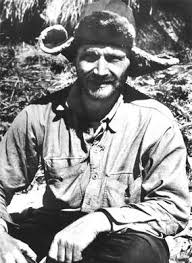The Brocken Spectre 2, or A Poem for Billo, who is still away
Against Biography
by William Bronk
We came to where the trees, if there were trees,
say, a little group of them, or a house
maybe, something there, whatever it was,
maybe, something there, whatever it was,
a man standing, someone, it would be clear
enough, sharp at the edges but everything else
was blurred, all running together or else
moving - sideways, back and forth- or the scale
was wrong, some of the things close by
were smaller than those set further back, so that though
we saw something, and saw it plain enough
we saw it nowhere, there wasn't any place
for it to be, or any place for us.
We wandered. Not quite aimless. Man here, though,
would live without biography: it needs
a time and place: there isn't any: who
could say, not smiling, me and my world
or so and so and his time, and stage a play
clothed properly in front of sets,
and believe that this made time and place of the world?
No, we have come too far for that belief
and saw ourselves as ghost against the real,
and time and place as ghosts; there is the real.
It is there. Where we are: nowhere. It is there.



